10 ingenious ways to adapt to climate change and protect the planet – #1 how coffee farming can save the cloud forests of Peru
Around the world, Practical Action is working with communities experiencing the first-hand effects of the climate crisis. From the sudden impact of floods that wipe out crops, and destroy lives and livelihoods. To slow the devastation of droughts that drive people from their homes to survive, and threaten future food supplies. And the gradual erosion of the natural resources that people rely on.
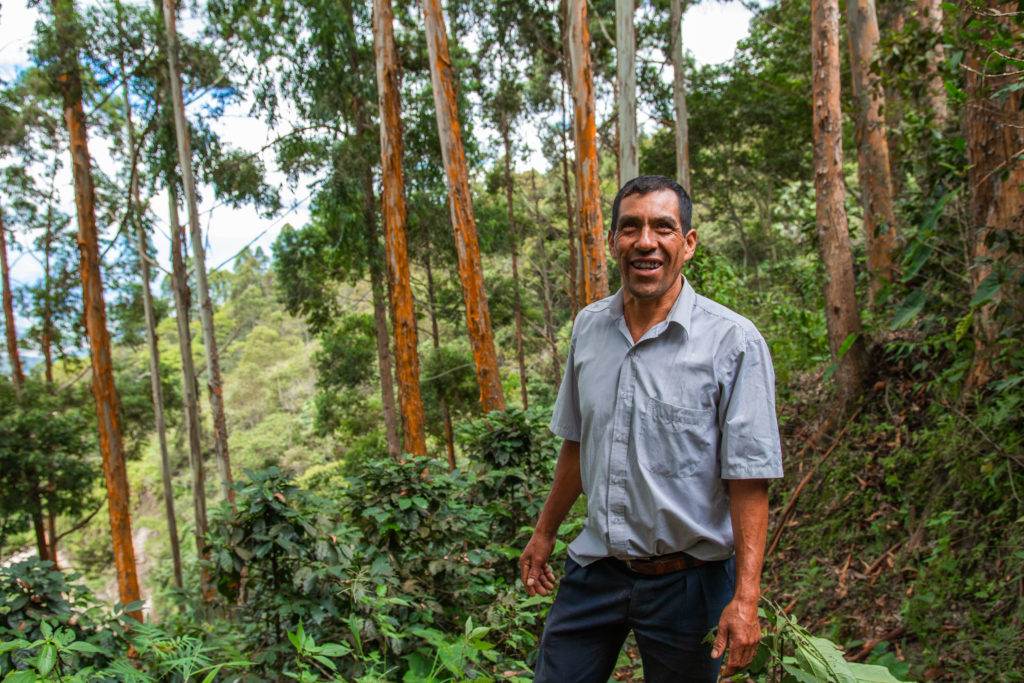
As the changing climate becomes more extreme and unpredictable, it pushes millions more people into poverty every year, reversing hard won gains and costing the global economy billions.
But despite this, ingenious community led approaches are successfully helping people adapt to the changing climate change and tackle some of the big issues. From coffee farming and deforestation in Peru, to seed sovereignty (fair access to seeds for farmers) and future food security in Zimbabwe.
In this series of articles, we’ll be covering how communities around the world are rising to the challenges of climate change. Our first article explains how our collaboration with small-scale coffee farmers in Peru is transforming a vital agricultural sector, and protecting the fragile environment. It’s proof that community-based adaption works, and offers multiple benefits.
An issue of economics
Coffee is the second most popular drink in the world, and for the last four decades it has been the most important agricultural commodity in Peru. More than 425,000 hectares are cultivated with coffee (considering that a rugby pitch is just over 1 hectare in size!) and in 2015 alone, almost five million quintals (equal to 500million kgs) of green coffee were exported, with a value of $888 million US dollars.
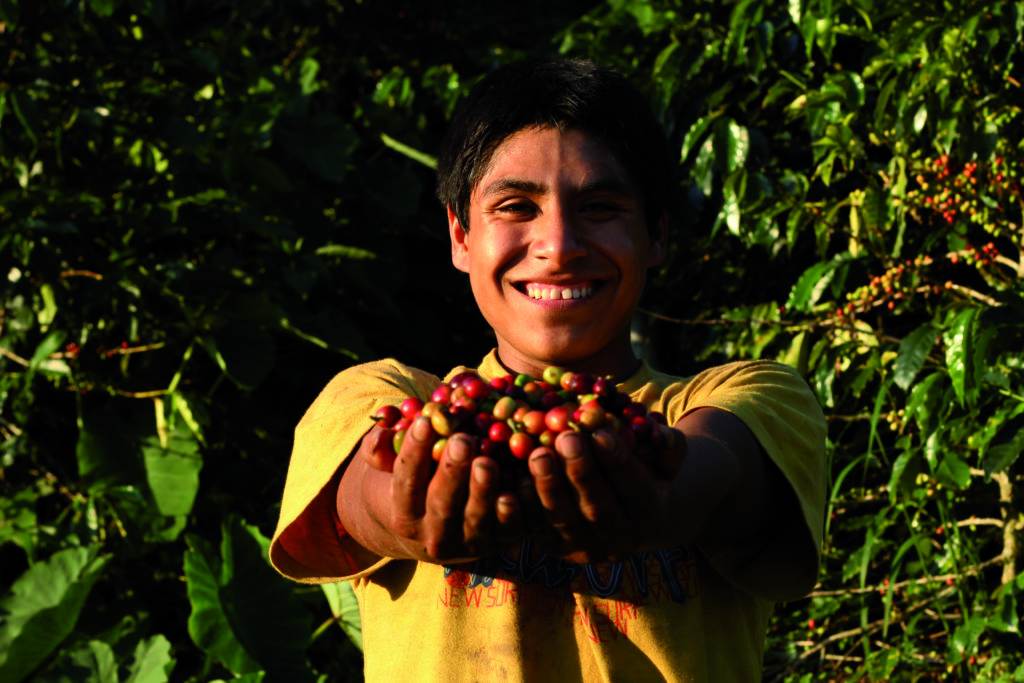
Produced in the highland areas on the eastern side of the Andes, mostly by smallholder farmers cultivating less than 5 hectares, it’s estimated that more than 150,000 families in Peru currently rely on coffee for their income.
However, coffee is particularly susceptible to climate change. Quality coffee requires cool temperatures which is the reason it is grown in hilly areas. Increasing global temperatures and deforestation are reasons why it is being grown at ever higher altitudes. The movement of intensive coffee farming to higher elevations and associated deforestation drives a vicious cycle of increasing temperatures and climate change.
This creates a negative cycle of diminishing returns, harmful for the produce of local farmers and the local climate as a whole.
“Sustainable coffee farming in Peru is proof that community-based adaption works, and offers multiple benefits.”
The ongoing challenge of a changing climate
As a result of unpredictable rainfall, temperatures and prices, and intensive coffee farming practices (integrating the shade from the trees combines with the use of chemical fertilisers and pesticides to maximise yields), many areas of conventionally farmed coffee have become unproductive and are either abandoned altogether, or converted to other crops.
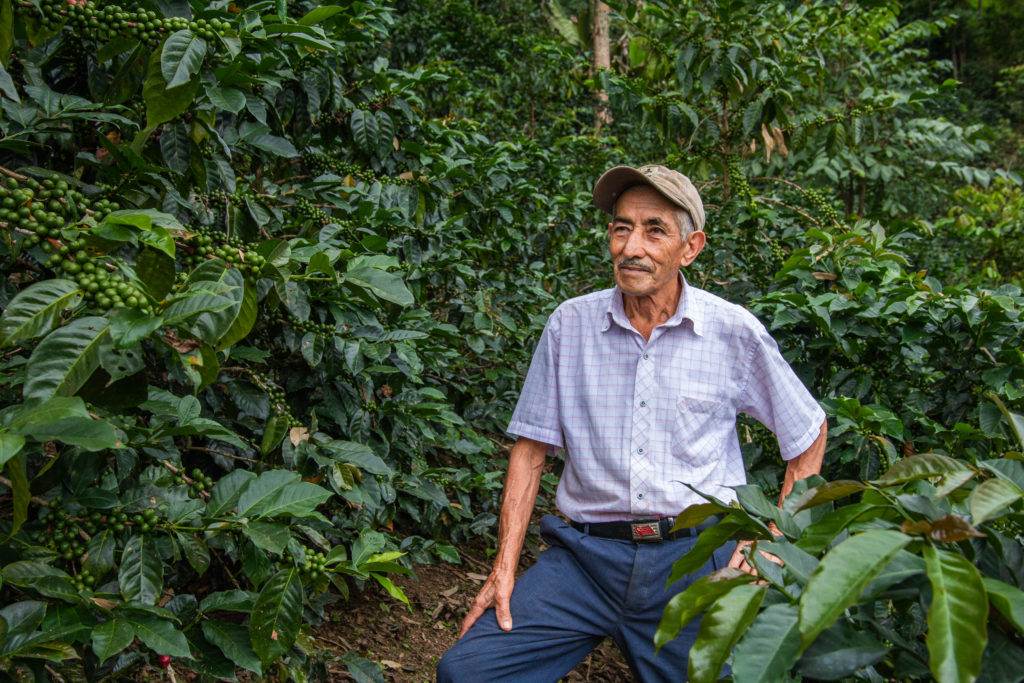
And in the face of declining yields, and increasingly unreliable income, the common response for coffee farmers – large and small – is to move uphill to more fertile, cooler and often forested land, leading to deforestation in the hills due to coffee farming.
An issue for people and planet
Our staff have been travelling to the cloud forests of tropical Peru for many years.
Meeting coffee farmers, many of whom had come from the high Andes to escape the harsh and unproductive environment. Most with no land titles, and operating with limited resources or experience in land management in tropical conditions.
And time after time, we heard small scale farming families consistently describe five things causing them to struggle…
“Coffee is the second most popular drink in the world, and for the last four decades it has been the most important agricultural commodity in Peru.”
Five challenges
- Their farms were too small, and they had always wanted to move forward into the forest ‘to secure land for their future generations’.
- They couldn’t access credit from banks, because they didn’t have enough money or the ability to set up an account and a business plan.
- As a result, they were reliant on middlemen to get hold of cash, and to sell their products at unfair prices.
- They said ‘I’m too old now’. Many farmers were at an advanced age, and their sons had already moved to the cities for better lives. They worried about who was going to continue their work.
- They told us ‘other crops pay better’, a subtle way of saying there was a risk they may start growing illegal crops.
An opportunity to work together for change
Our team in Latin America saw these challenges reflected in the way most farms were functioning. ‘traditional’ coffee farms had a number of issues to overcome to make coffee production sustainable for the environment, and the people who ran them.
The issues were:
- Low access to up-to-date farming techniques and equipment meant they faced poor productivity and quality
- Extended use of mono-cropping was increasing diseases, and resulted in them using chemicals to control plagues.
- The need for more land and lack of productivity was fueling a high deforestation rate and impacting greenhouse gas emissions
- And this, combined with climate change, was causing greater numbers of natural disasters, such as forest fires and landslides.
We saw an opportunity to work with farmers in Peru to enable them to learn better techniques, farm sustainably and adapt to the changing climate. If we fail to do so, the results will be catastrophic. However, there is a clear opportunity to do things differently going forward – and a growing demand for coffee that not only creates sustainable livelihoods for farming communities but is also good for the planet, too.
“There is a clear opportunity to do things differently going forward – and a growing demand for coffee that not only creates sustainable livelihoods for farming communities but is also good for the planet, too.”
The ingenious solution: transformative ways of farming, new skills, and making the market work for small-scale farmers
Over the past ten years, Practical Action in Latin America has worked in partnership with small scale coffee farmers to develop a series of techniques to increase productivity and quality and income and engage farmers more effectively with the market. The solution also mitigates climate change by conserving the forest and reducing emissions – resulting in a win/win for people and for the planet.
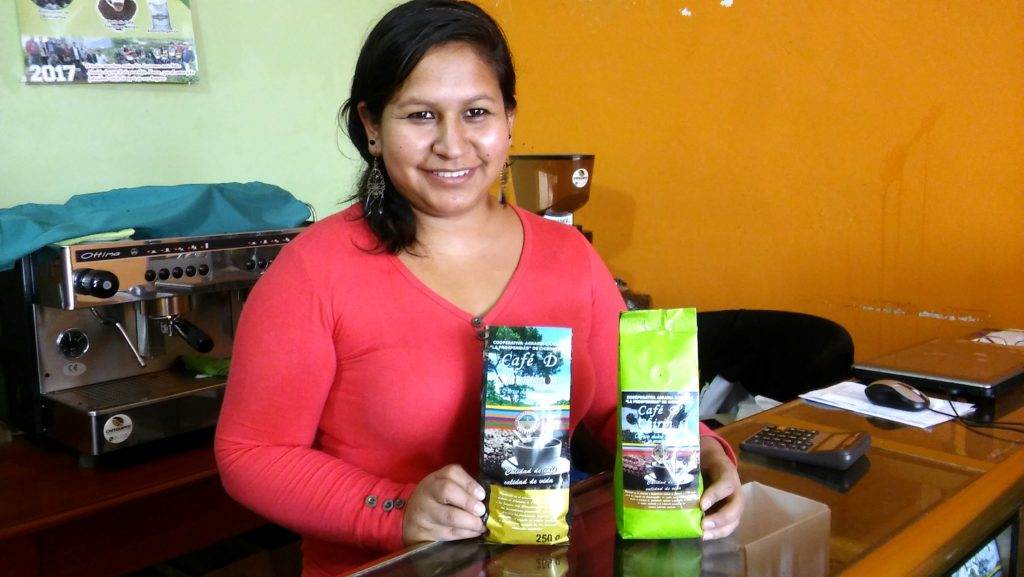
It’s an ingenious combination which makes a huge difference
Layer farming: in which we work with farmers to diversify their production to include smaller crops that can grow among or under the coffee and yield regular cash – such as yucca or other food crops – and larger trees that have value for wood, construction, honey, medicine and fruit. Layer farming means that the coffee, shade trees and other, plants animals can thrive in harmony. Above this layer, farmers can grow coffee plants. On top of that they are able to grow banana or other natural forest species and above that, even long-term hardwood such as mahogany. This creates a regular income for the farmer, natural shading for the coffee plants, prevents soil erosion and creates a longer-term ecosystem which strengthens organic matter and keeps the soil fertile. This, in turn, builds a sustainable relationship between the different plants and animals on the farm, with each element working in tandem to support the other.
New varieties of coffee and cash crops: These crops are more resilient to pests and disease
Biological pesticides: Which help prevent diseases without causing harm to the eco-system
Income diversification: Teaching farmers other techniques such as beekeeping which makes pollination more effective, help the eco-system and also earns the farmer an income. This also helps farmer be more resilient to external market factor, such as price fluctuation of coffee
Market linkage: Helping farmers work co-operatively so they can better access markets and get a better price for their produce. This creates a more inclusive market, dedicated business spaces and a dialogue with the wider market, allowing farming communities a seat at the table
Improved equipment and training: To improve the post-harvest processing of coffee and other crops so they are able to make more money
A collaborative approach: Working closely with farming communities to ensure the solutions work for them, are sustainable and can be shared with other groups
Using policy to ensure the solutions are here to stay: By bringing policy-makers at regional and government level in, we’re able to work towards a lasting commitment to sustainable farming and a real system change.
We know these solutions work!
For more than ten years, we have seen the communities we work with transform their lives and the environment around them. And once the solutions start working, the destruction of the rainforest doesn’t just stop – it can be reversed.
Coffee and bees – improving biodiversity and creating stable futures
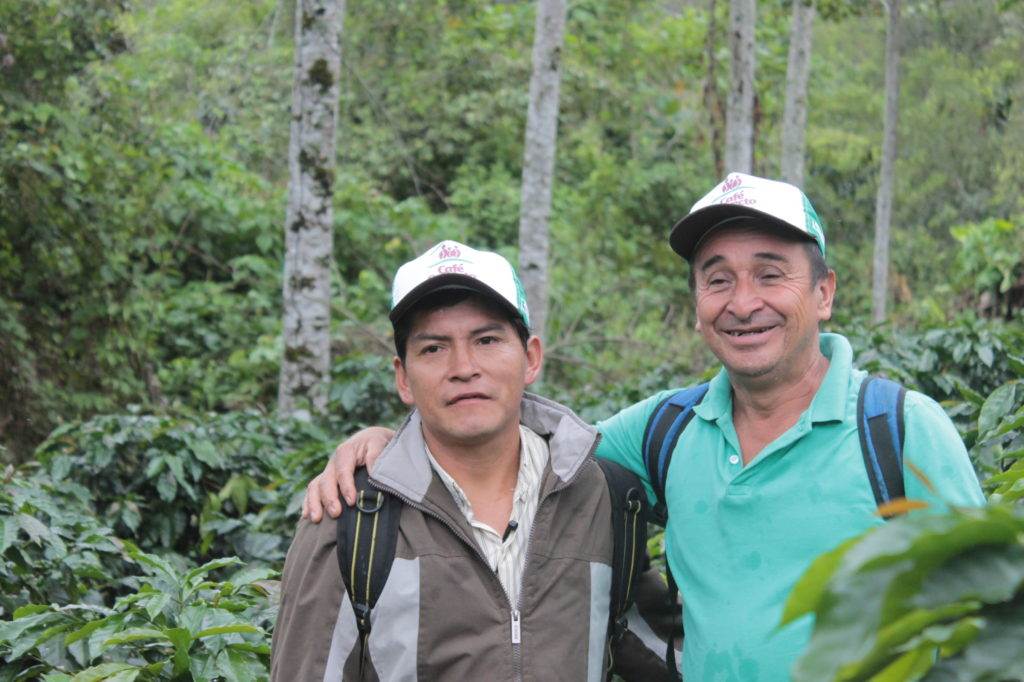
Luis Bobadilla (pictured, right) has been growing coffee on his estate for twenty-five years and is now the president of the Beekeepers Coffee Committee and a partner of the Aprovat cooperative.
There are 174 farmers working to promote the sustainable management of natural resources and the implementation of sustainable practices in coffee production. Keeping an apiary and beekeeping not only offers additional produce and income, but during the flowering season of coffee it increases the pollination of coffee plants as well as citrus cash crop trees.
Luis Bobadilla’s plot also has a large variety of timber trees, such as shaina and ballina, which is part of an integral reforestation project. As well as preserving the biodiversity and health of the cloud forest, these trees also produce additional fruit and nuts.
Many coffee farmers live in poverty, with half unable to access health insurance and only half with access to a government pension. The cooperative enables them to gain a stable price for their crop, access credit and finance and improve the quality of life.
Real change has already started…
We know this approach works, and have come a long way already. We have been able to provide technical support to famers. We’re supporting governments as they plan their actions to mitigate climate change (to reduce CO2 and other greenhouse gas emissions) via Nationally Appropriate Mitigation Actions (NAMAs), and help develop their National Adaptation Plans (NAPs). Both NAMAs and NAPs fall under the Nationally Determined Contributions (NDCs), which are the higher level and more important policy documents: the basis of global action and the Paris Agreement.
We’re also working with other non-governmental organisations (NGOs) and research agencies to share this approach. And we’ve helped improve agroforestry laws that will help mobilise farmers to protect the forest by not clearing land, but by using coffee agroforestry instead. These agroforestry laws encourage farmers to use sustainable and well-managed coffee agroforestry, which in turn leads to careful cultivation of coffee within the forest, retaining overhead shade and protecting as many forest plants as possible.
… but there’s still room to grow
Recent policy development in Peru is focused on reducing deforestation and climate change (albeit still largely just on paper). So things are slowly improving, but our approach still isn’t the ‘norm’.
Lasting change is possible, but for these developments to be successfully rolled out and up-scaled, they need to:
- Be appropriately funded
- Included in policy at a regional and local level
- Coordinated across agriculture, forestry, and environmental policies
- Involve the private sector
Transforming the coffee sector in Peru will help local farmers succeed; improve the wellbeing of everyone in the area; mitigate against future climate change; and protect the environment.
This approach offers multiple benefits and plays a vital role in achieving the Sustainable Development Goals:
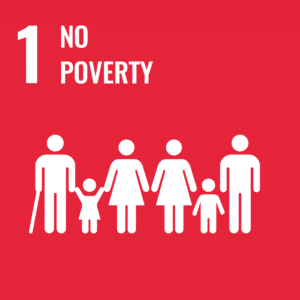
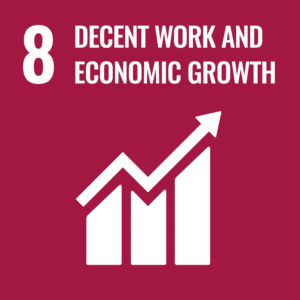
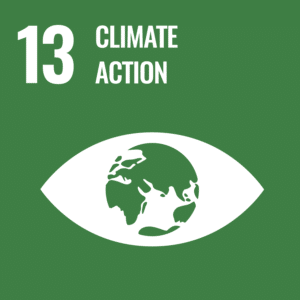
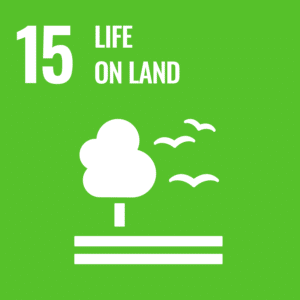
Now, let’s work together and help coffee farmers in Peru adapt to the changing climate, and protect the cloud forests for the future. You can also do your bit by making sure the coffee you enjoy in the morning is sustainably grown!
If you also believe that it’s time to do things differently and believe that your coffee should be grown sustainability, with the farmers fairly paid, you can get involved with Practical Action and help farmers adapt to a changing climate.